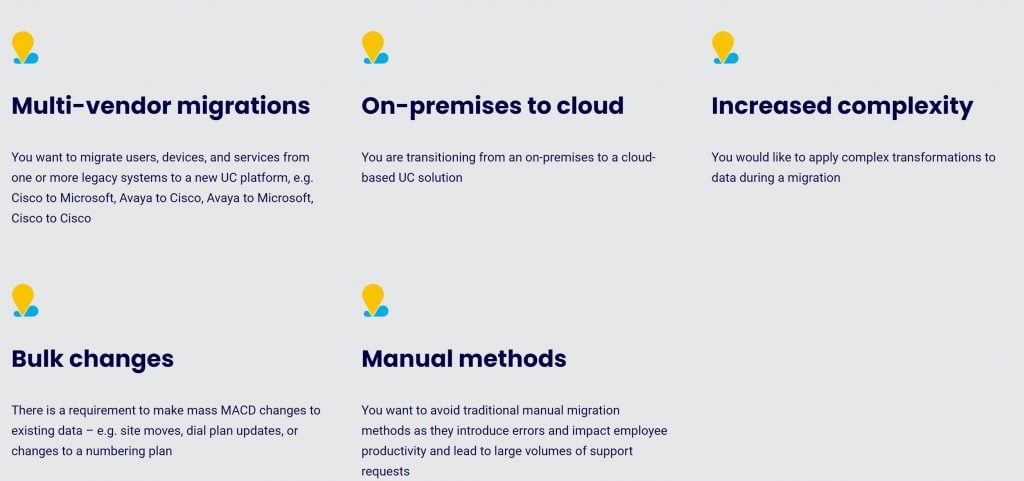Unified communications and collaboration companies are known for the speed and scale at which they can (and do) pump out innovation. Even long before the Coronavirus Pandemic: it was a widely-accepted fact. Today: that only seems to have been elevated to the maximum, with companies like Five9, Zoom, Slack, and Microsoft all growing quite exponentially during this period.
Today, innovation is the thing that seems to keep companies afloat, as more homeworkers seek fresh and innovative ways to connect from near and far. And hybrid working presented another element to the equation - how to create some form of equity in meetings.
As such, whiteboards, software, and physical hardware have come to fruition - enabling some fairly advanced functionalities to bridge gaps like those that exist for leaping potential hurdles when doing business on a global scale - such as language barriers.

Zoom - Interpreter feature
Today, automated captions, even real-time translation, and interpretation are available on some of the biggest platforms, with Zoom: most recently giving its paid and free users access to said features. Zoom's looking to level the playing field with a near-complete platform overhaul with numerous updates to advanced features set to deliver on (just) that.
Forecasters at International Data Corporation, otherwise known as IDC, recently published its list of innovators. The report profiles four vendors that extend what forecasters there call:
"Innovative unified communications and collaboration (UCC) management solutions that address the growing needs of organizations to properly monitor, manage, and analyze the performance of their networks, applications, and devices."
Kurmi Software, Martello Technologies, VOSS Solutions, and Vyopta are all named in the report: and below, I will explore why these four vendors were named out of the countless that exist in the industry.
Meeting the Criteria
According to IDC, what it calls "innovators" are emerging vendors with more than $100 million in revenue, and IDC's words, not mine: "Have demonstrated either a groundbreaking business model or an innovative new technology — or both." The solutions they extend all support the expansion of real-time communications like voice and video (when it comes) to reliability and efficiency.
It does not matter if that is on-premises or in the cloud.
Unified communications and collaboration management tools all support a range of possibilities, including but not limited to initial setup and provisioning. That includes new users and phone numbers like adding newly-hired employees to an 'active directory,' user migration to the cloud, and real-time voice/video performance monitoring, management, and administration.
Reporting and analytics, design/deployment services, automation, and security - are also very (much so) considerations. Rather importantly, these vendors all support some form of integration with APIs for business workflow and application integrations across the broader global UCC ecosystem.
Why these Four UCC Vendors?
Plenty of folks want to leverage the tools of a single vendor: while others find that a single vendor merely does not "do it" for them. As such, there is a need for robust management tools like the ones named in IDC's recent report. In that report, forecasters there note that:
"With a mix of multivendor communication and collaboration solutions being the norm in many business environments today, customers are increasingly considering third-party, cloud-based alternative solutions for managing their UCC tools."
It goes on to say - that this is because third-party tools typically can better manage multivendor environments versus UCC vendor-supplied management solutions. The four companies named in the report: have managed to pull that massive feat off - seemingly with ease, with IDC further noting:
"Note that UCC management solutions can support many of these functions, but very few support all these functions."
According to friends at UCC research firm Metrigy where Irwin Lazar is President and Principal Analyst, their research suggests that roughly 40% of companies use third-party UC management platforms, and about 30% have invested in new tools to support their migration to UCaaS.
"These platforms provide several benefits including the ability to easily manage multi-vendor environments, and cost and time savings from faster provisioning and MTTR when performance problems do occur," Lazar shared.
Metrigy data further show an average improvement of 41.3% in MTTR (mean time to repair) for those using UC management platforms - he added.
And the Innovators Are
In no particular order - Kurmi Software is at the top of this list. It extends support for a single-unified user interface where users can manage and administer different types of enterprise communication infrastructure. And according to IDC, the solution (is compliant) with all voice architectures that reside on-premises and in the cloud.
Martello Technologies is up next: and the vendor provides end-to-end visibility and insight into Microsoft 365 and Teams performance. "It does all this by correlating data on the network and UCC application performance to deliver an enhanced digital user experience," IDC wrote in a statement.
VOSS Solutions offers something unique as well, a look into all UC operations and performance management software with: "High levels of automation and analytics to enable organizations in the provisioning: management, and monitoring of the digital workplace," IDC notes.
Vyopta is the one vendor to make the list that I am most familiar with, as I have covered the firm quite extensively. In July, I had a one-on-one interview with Alfredo Ramirez, the company's President & CEO. During our chat, we touched on how to manage CX and UX in our newfound reality of remote and hybrid work.
Vyopta helps organizations optimize the kinds of UC experiences they have while enhancing productivity.
Further, it comes down to the ability to maximize the technology organizations rely on - daily. And that comes with countless far-reaching implications like the ability to drive UC adoption, technology, migration, and aspects of technology. It furthermore supports capacity planning, which, oddly enough, often comes as an afterthought.
An Expert's Take on All This
I wanted to get the take of a UC expert, so I reached out to one such expert: Kevin Kieller, Co-Founder and Lead Digital Strategist at enableUC. He told me that the value these kinds of technologies can drive for organizations is nearly-unmatched, telling me:
"Many organizations focus so heavily on their UCaaS implementation they forget the tooling and training necessary to help their IT staff manage the ongoing user experience."
He believes that management tools have become especially important in the current fluid work environment that often sees increased staff turnover and employees transitioning from in-office to remote work, then; often back again.
"The leading management tools help improve the overall user experience and provide the necessary auditability for changes that organizations should require," I was told.
Looking beyond simple management, Kieller notes that we have seen leading management tool vendors assist in migrating from one platform, whether on-prem or cloud-based, to another. "For example, VOSS has tools that assist in current configuration discovery (which is often much harder than people recognize) and migration."

VOSS Cloud Migration - Challenges
As we make more technological progress, more and more organizations, for various reasons, end up with a collection of UCC tools serving different areas of business - according to Kieller. He contends that this is likely due to mergers and acquisitions.
It could also be because use cases vary across lines of business, he shared. "When dealing in the MultiCaaS world, management tools that provide a single pane of glass for onboarding, configuration changes. And things like analytics provide strong ROI and make the life of IT staff much easier," he reiterates.



